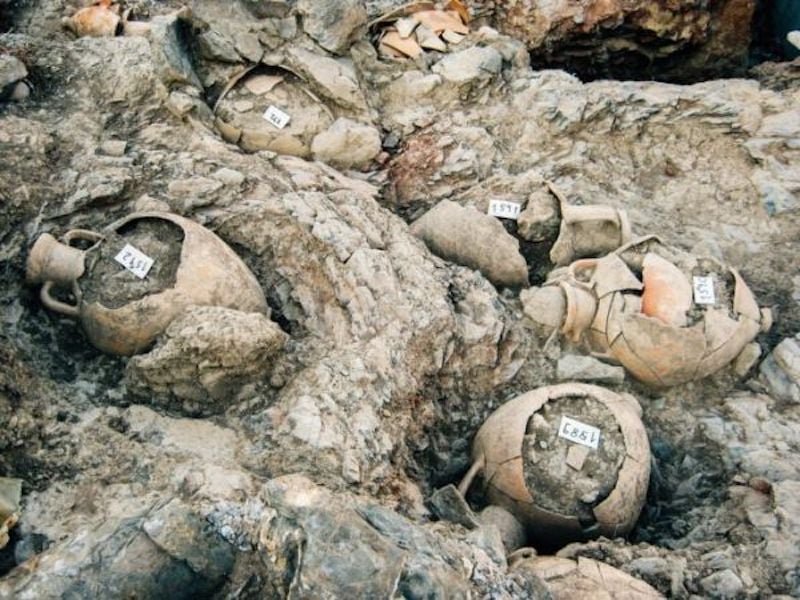The study of the largest ancient cemetery for infants found on Astypalea island in Greece continues, shedding light on the worship of the goddess of childbirth and the Earth mother. The Dodecanese Ephorate of Antiquities that is carrying out the study has found that almost all the infants buried there were newborns or, at most, a few months old. There are also a few toddlers that were up to two years of age.
The bodies of the babies were placed in ceramic containers, mainly amphorae or hydrias, whichwere buried in shallow pits with stones on top, which indicated that there was a tomb there. Burial of newborns and babies in such receptacles was a rather common way of burial in ancient times. What distinguishes the infants’ cemetery of Astypalea is the huge number of tombs and its use for almost an entire millennium. So far, a total of 3,000 vessels containing the skeletons of babies have been excavated, but many more are buried in the cemetery.
With few exceptions, the tombs did not contain favorite objects of the dead, which was common for newborns and infants since they were not considered “full” persons at that point, thus were not buried ceremoniously and traditionally as all adults were.
The number of tombs and the fact that the containers come from various parts of the Mediterranean indicate that it is possible that many of the infants did not belong to Astypalea’s inhabitants.
The uniqueness of the Kylindra area on the island lies in the fact that it is a burial ground exclusively for newborns and infants, most of whom died at birth. Such a large cemetery for infants is certainly not justified by the size of the island’s population. There was a city there, but it was not one of the most important in ancient Hellas.
The most realistic theory for the existence of a cemetery for infants on the island is that there could have been a sanctuary on Astypalea where women went to give birth. Indeed, inscriptions have been found on the island that mention not only Asclepius, but also Eileithyia, the goddess of childbirth and midwifery. She helps women give birth and endure its great pains. She is also worshiped as a goddess who takes care of newborns.
The latter seems more likely to be associated with the presence of newborns and infants on the island. Such sanctuaries existed in other parts of the Hellenic world, but perhaps that of Astypalea was one of the most famous and had pan-Hellenic significance. Thus, women who were not from Astypalea would prefer to give birth there, much like, for example, patients from all over Greece would visit the Asclepieion of Epidaurus for cures of their diseases.
It is even possible that there were doctors specializing in obstetrics in the sanctuaries of Eileithyia, something that would be especially helpful to midwives at a time when childbirth was particularly dangerous and many newborns and mothers died in the process. Even under these conditions, many newborns would die in the sanctuary, and perhaps these were the ones who were buried in the cemetery of Astypalea.
Eileithyia had many sanctuaries in Crete. The most famous places of her worship were in Amnisos, Olounda, Diktynnaio and Inato, but the main seat of the Goddess was in ancient Lato.


No comments:
Post a Comment